Abstract
In response to water stress, Portulacaria afra (L.) Jacq. (Portulacaceae) shifts its photosynthetic carbon metabolism from the Calvin-Benson cycle for CO2 fixation (C3) photosynthesis or Crassulacean acid metabolism (CAM)-cycling, during which organic acids fluctuate with a C3-type of gas exchange, to CAM. During the CAM induction, various attributes of CAM appear, such as stomatal closure during the day, increase in diurnal fluctuation of organic acids, and an increase in phosphoenolpyruvate carboxylase activity. It was hypothesized that stomatal closure due to water stress may induce changes in internal CO2 concentration and that these changes in CO2 could be a factor in CAM induction. Experiments were conducted to test this hypothesis. Well-watered plants and plants from which water was withheld starting at the beginning of the experiment were subjected to low (40 ppm), normal (ca. 330 ppm), and high (950 ppm) CO2 during the day with normal concentrations of CO2 during the night for 16 days. In water-stressed and in well-watered plants, CAM induction as ascertained by fluctuation of total titratable acidity, fluctuation of malic acid, stomatal conductance, CO2 uptake, and phosphoenolpyruvate carboxylase activity, remained unaffected by low, normal, or high CO2 treatments. In well-watered plants, however, both low and high ambient concentrations of CO2 tended to reduce organic acid concentrations, low concentrations of CO2 reducing the organic acids more than high CO2. It was concluded that exposing the plants to the CO2 concentrations mentioned had no effect on inducing or reducing the induction of CAM and that the effect of water stress on CAM induction is probably mediated by its effects on biochemical components of leaf metabolism.
Full text
PDF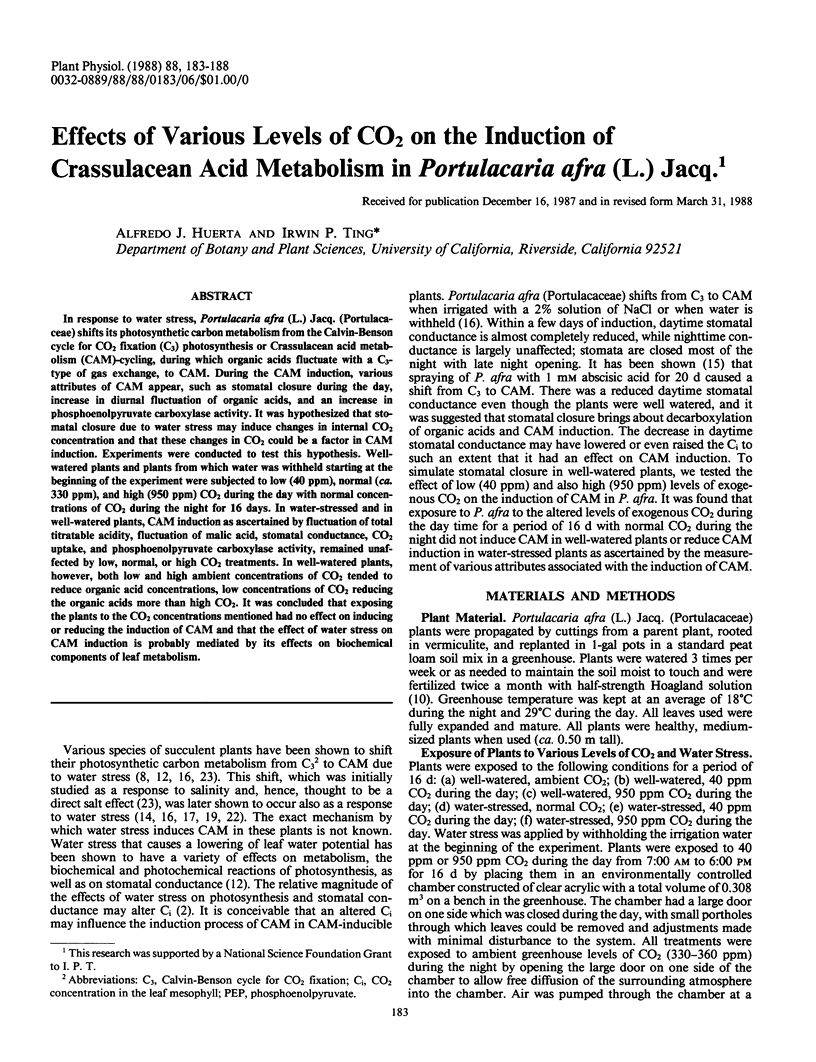
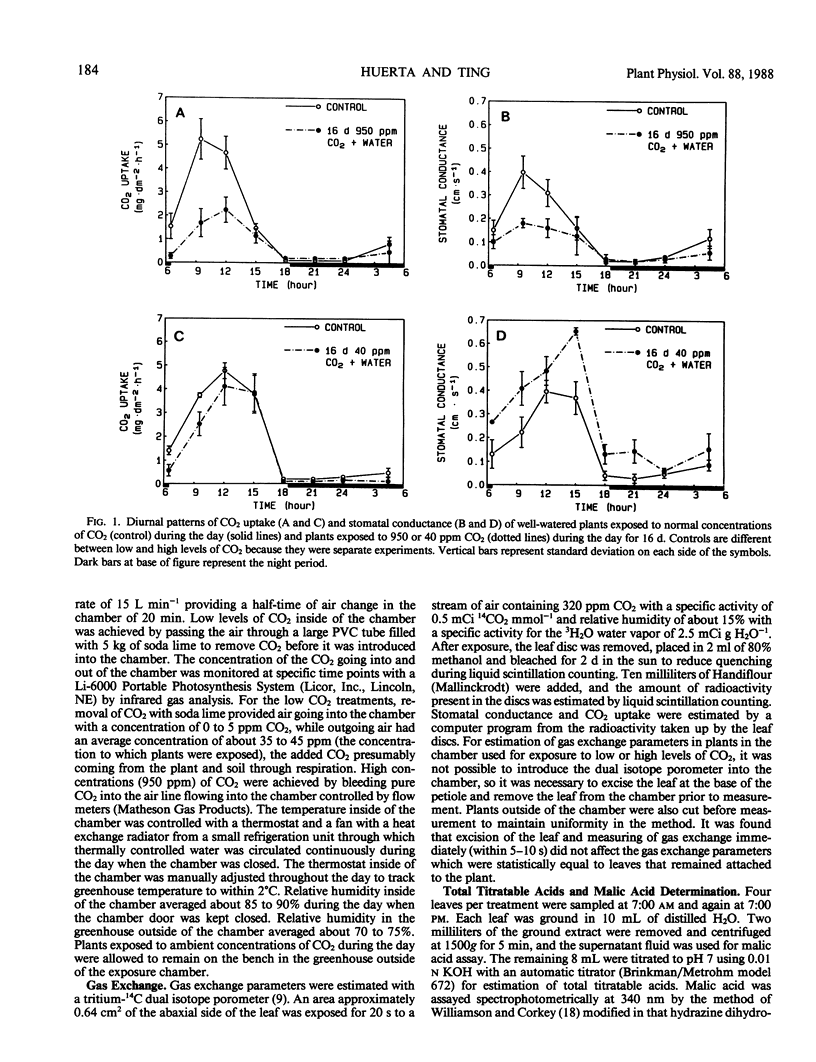
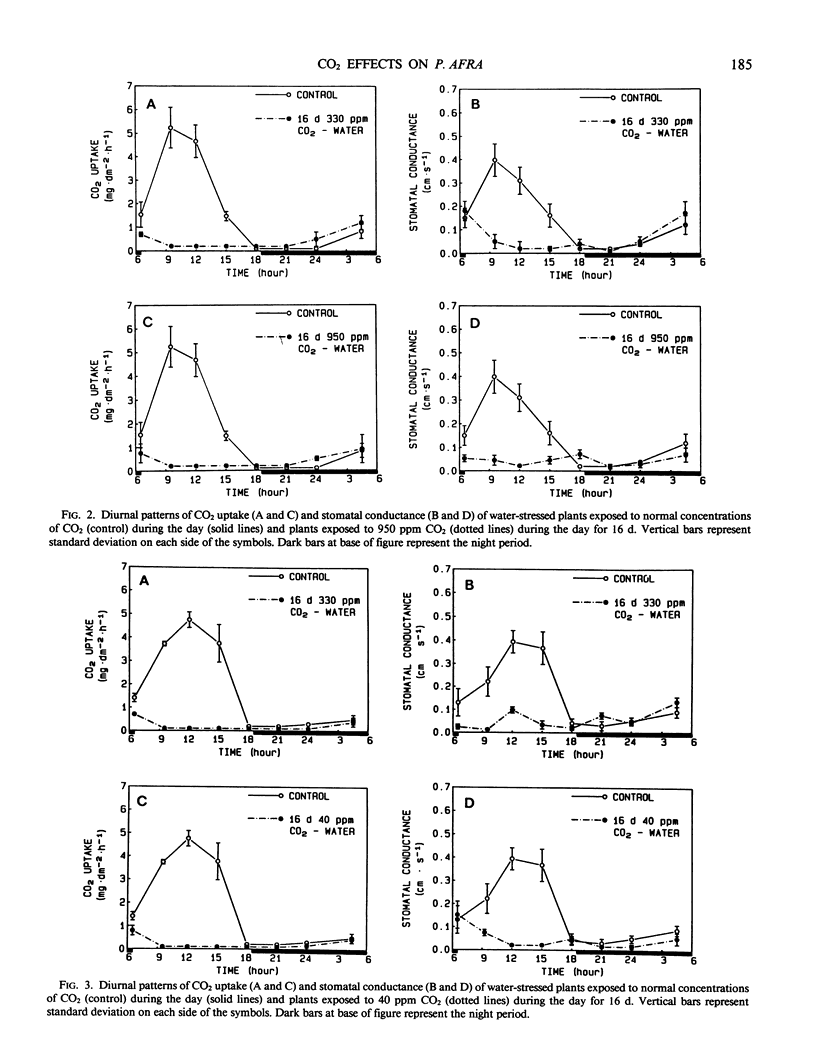
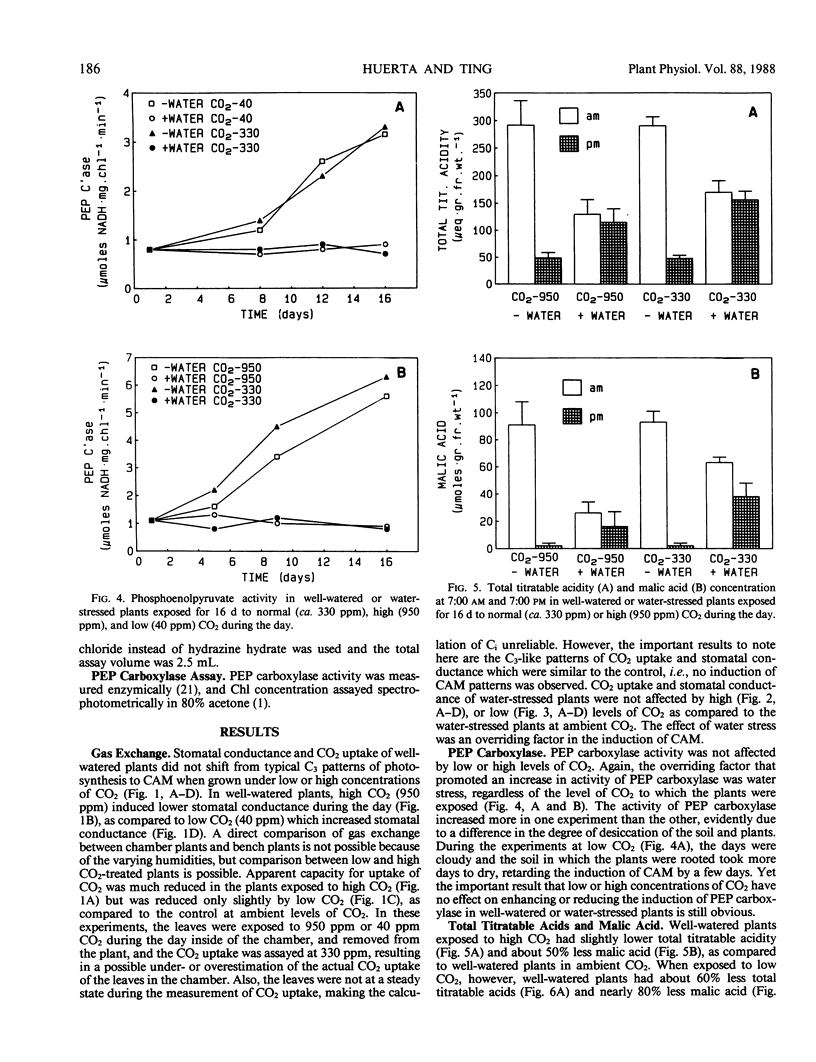
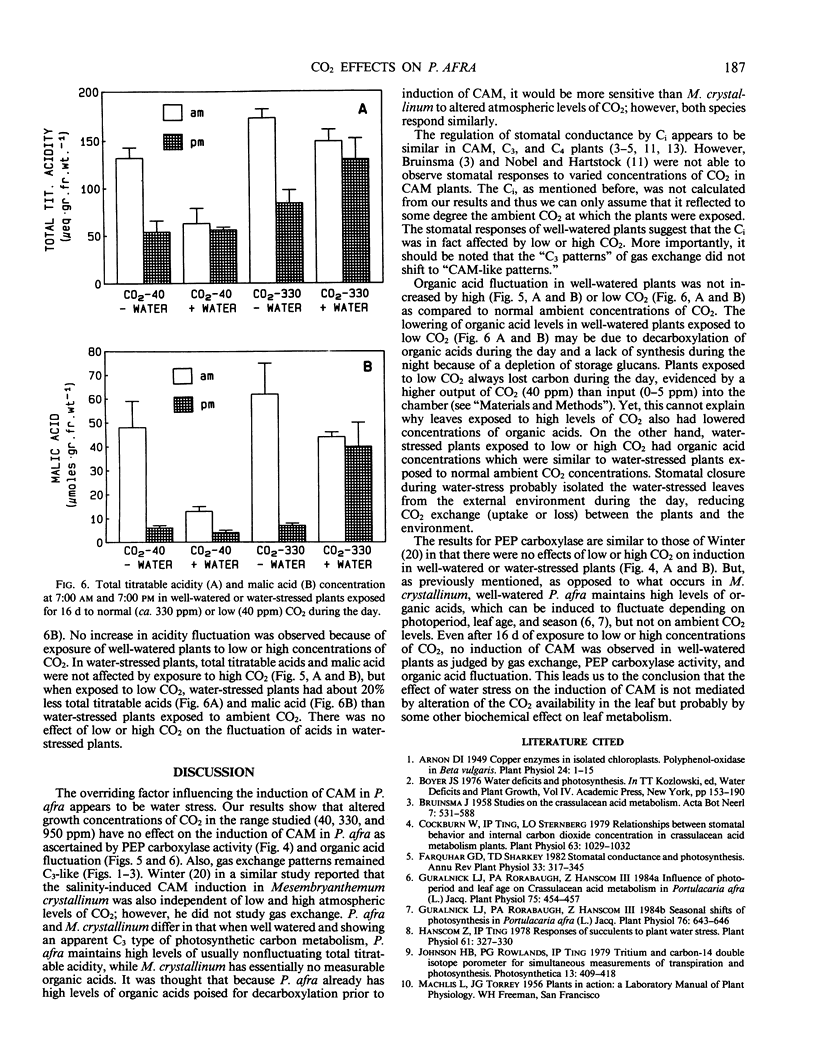
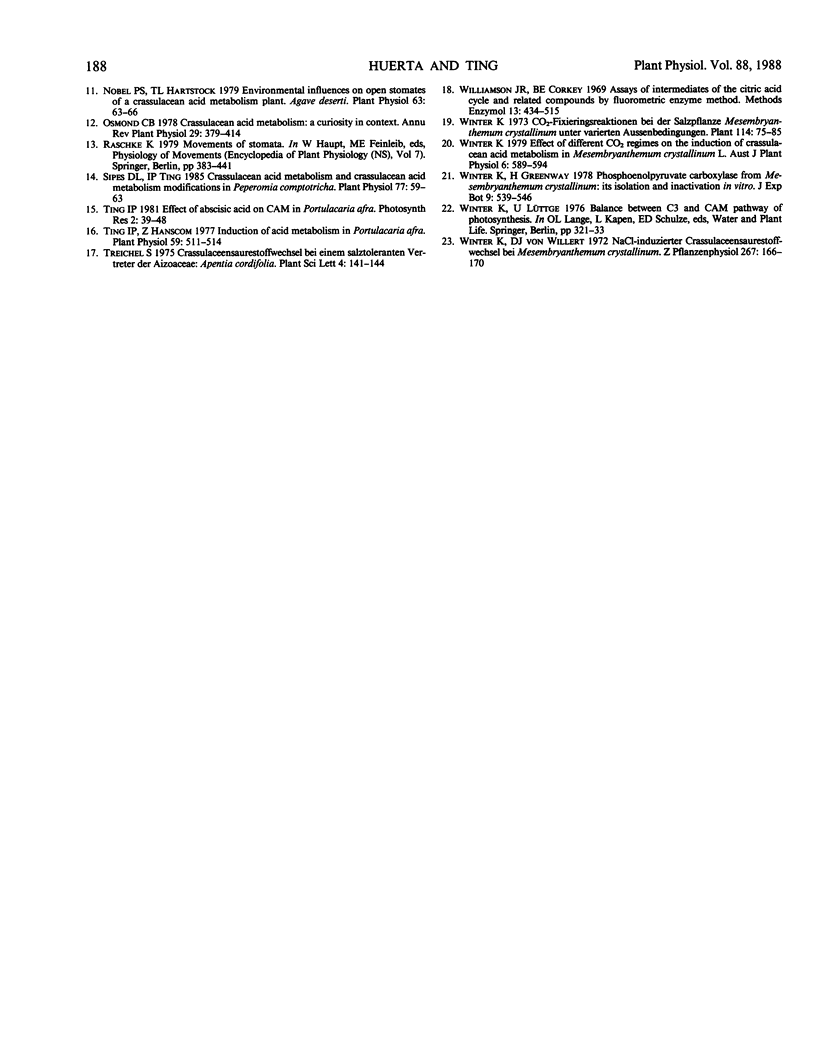
Selected References
These references are in PubMed. This may not be the complete list of references from this article.
- Arnon D. I. COPPER ENZYMES IN ISOLATED CHLOROPLASTS. POLYPHENOLOXIDASE IN BETA VULGARIS. Plant Physiol. 1949 Jan;24(1):1–15. doi: 10.1104/pp.24.1.1. [DOI] [PMC free article] [PubMed] [Google Scholar]
- Cockburn W. Relationships between Stomatal Behavior and Internal Carbon Dioxide Concentration in Crassulacean Acid Metabolism Plants. Plant Physiol. 1979 Jun;63(6):1029–1032. doi: 10.1104/pp.63.6.1029. [DOI] [PMC free article] [PubMed] [Google Scholar]
- Guralnick L. J., Rorabaugh P. A., Hanscom Z. Influence of Photoperiod and Leaf Age on Crassulacean Acid Metabolism in Portulacaria afra (L.) Jacq. Plant Physiol. 1984 Jun;75(2):454–457. doi: 10.1104/pp.75.2.454. [DOI] [PMC free article] [PubMed] [Google Scholar]
- Guralnick L. J., Rorabaugh P. A., Hanscom Z. Seasonal Shifts of Photosynthesis in Portulacaria afra (L.) Jacq. Plant Physiol. 1984 Nov;76(3):643–646. doi: 10.1104/pp.76.3.643. [DOI] [PMC free article] [PubMed] [Google Scholar]
- Hanscom Z., Ting I. P. Responses of succulents to plant water stress. Plant Physiol. 1978 Mar;61(3):327–330. doi: 10.1104/pp.61.3.327. [DOI] [PMC free article] [PubMed] [Google Scholar]
- Nobel P. S., Hartsock T. L. Environmental Influences on Open Stomates of a Crassulacean Acid Metabolism Plant, Agave deserti. Plant Physiol. 1979 Jan;63(1):63–66. doi: 10.1104/pp.63.1.63. [DOI] [PMC free article] [PubMed] [Google Scholar]
- Sipes D. L., Ting I. P. Crassulacean Acid Metabolism and Crassulacean Acid Metabolism Modifications in Peperomia camptotricha. Plant Physiol. 1985 Jan;77(1):59–63. doi: 10.1104/pp.77.1.59. [DOI] [PMC free article] [PubMed] [Google Scholar]
- Ting I. P., Hanscom Z. Induction of Acid Metabolism in Portulacaria afra. Plant Physiol. 1977 Mar;59(3):511–514. doi: 10.1104/pp.59.3.511. [DOI] [PMC free article] [PubMed] [Google Scholar]


